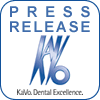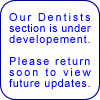Ozone
Treatment of Primary Occlusal Pit and Fissure Caries (POPFC):
12-Months Clinical Severity Changes
by L Abu-Naba'a, H Al
Shorman and E Lynch
School of Dentistry, Queen's University, Belfast, Northern
Ireland, UK |
| Conclusion:
Clinical changes were significant from baseline for both
groups. Detailed clinical scoring should be developed
to refine this validated diagnostic tool to monitor remineralisation.
As Ozone-treated lesions stabilised using a clinical severity
score system from 6-months, the control lesions steadily
deteriorated. (*, p<0.05) |
Objectives
A clinical severity index was used to monitor lesions'
remineralisation, arrest or progression with/without ozone
treatment in a controlled clinical trial.
Methods
258 non-cavitated lesions were enrolled and cleaned with
Prophyflex-2® (KaVo, Germany). Clinical scores were then
recorded [Ekstrand KR et al.: Caries Res.1998;32:247-254].
After randomisation, half the lesions (Trt) were treated with
Ozone (10-seconds) (HealOzone, CurOzone and KaVo, USA and
Germany) and the other half were reserved as controls (Ctrl).
The procedure was repeated at 1, 3, 6, 9 and 12 months. The
score changes were tested from baseline and between groups
by 1-sample and paired t-tests.
 |
Results
On average, 222 lesions were recalled. Mean Trt change rose
slowly till 6 months and then stablized (0.018±0.05,
0.216±0.06* and 0.283±0.06*) while Ctrl lesions
had high mean changes, which steadily rose at 1, 6 and 12-months
(0.079±0.04*, 0.294±0.07 and 0.443±0.07*)
increasing the difference between groups (12-months, p=0.081).
More teeth, on average, improved or remained stable in Trt
than in Ctrl at all recalls. 6 lesions in Ctrl changed score
from 1 to 3 compared to only 1 in Trt. Different patterns
of change suggested dissimilar mechanisms within the groups.
As Ctrl steadily increased, most probably by further lesion
progression, the Trt stabilisation may have reflected what
was clinically noticed by lesions getting darker (score 1
changes to 2 but score 2 remains stable with more staining).
More surface destruction (score 3) was noticed in Ctrl.
 |
Conclusion
Clinical changes were significant from baseline for both
groups. Detailed clinical scoring should be developed to refine
this validated diagnostic tool to monitor remineralisation.
As Ozone-treated lesions stabilised using a clinical severity
score system from 6-months, the control lesions steadily deteriorated.
(*, p<0.05)
Additional items
Authers
Layla Abu-Naba'a*
Hisham Al Shorman
Professor Edward Lynch
Ozone Treatment of Primary Occlusal Pit and Fissure Caries
(POPFC):
12-Months Clinical Severity Changes.
Summary
At the 12-months recall, non-cavitated occlusal carious lesions
treated with Ozone stabilised using a clinical severity score
system from 6-months. The control lesions steadily deteriorated.
Key words
Occlusal caries, Ozone, remineralisation, Clinical score.
Address of corresponding author
Layla Abu-Naba'a,
PhD Student
School of Dentistry, Queen's University, Belfast.
Royal Victoria Hospital,
Grosvenor Road,
Northern Ireland.
BT 12 6 BP
Fax 02890 263441
[email protected]
|




